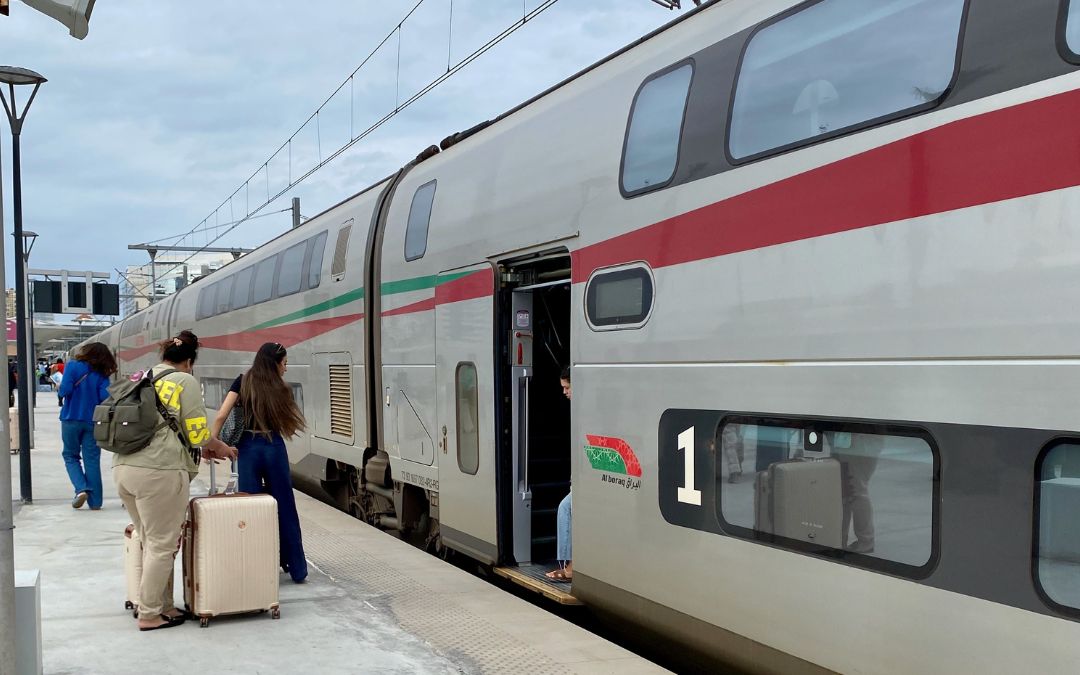Ditch the car and plane – take the train

High-speed train travel
Imagine travelling between Melbourne and Sydney without having to spend more than 8 hours (plus rest breaks and perhaps an overnight stop), in a car, or catching a plane, with all the inconvenience and cost involved. What if the journey took was safe and relaxing and took half the time of a car trip.
You could take one of our regional trains, but that would take you at least as long as the car trip, based on current train schedules between the two capitals – close to 12 hours.
Alternatively high-speed rail could whisk you from Melbourne to Sydney in less than half the time. Unfortunately Australia lacks this transport option.
High-speed rail in Australia was first seriously considered in 1984. In a report to the Hawke government, the CSIRO proposed a fast rail link between Melbourne, Canberra and Sydney. Finally, 40 years later, the High Speed Rail Authority (HSRA), is studying the feasibility of a Newcastle to Sydney link. If high-speed rail was available on this popular route, the current train journey time of around 2hrs 20min would be halved, making this a more practical commute for Sydney-bound workers.
In line with the 40 year old CSIRO report, the HRSA Newcastle-Sydney study is part of a proposed Melbourne-Canberra-Sydney, with a further connection to Brisbane.
With the Sydney to Melbourne air route being the busiest in Australia, and among the 5 busiest domestic routes in the world, the option of fast rail travel is a great alternative.
The HRSA web page suggests a 4 hour high-speed train journey between Melbourne and Sydney would be possible. If this is achievable, it would certainly be competitive with air and car travel.
Meanwhile, Australia is stuck with slow inter-city trains, while much of the rest of the world is well ahead. Our recent experience through Europe and Morocco gave us an opportunity to experience the benefits of rail travel at speed. With a couple of exceptions, the trains we travelled on (20 in total), were high-speed trains. Of these trains, the Eurostar is well known, zipping passengers from St Pancras in London, to Paris in under 3 hours. This journey time is typical of European trains.
Europe is not alone in having extensive, highly efficient rail networks. Like Europe, Morocco has made a substantial investment in the inter-city train system, with a planned 1500km of high-speed rail as their target. The newest trains operated by the ONCF, are identical to the well-known French high-speed trains operated by the SNCF. Able to travel at or above 300km per hour, they are modern, comfortable and consistently on time – and they are remarkably frequent. Trains between Casablanca and Tangier run less than 1 hour apart throughout the day.
In contrast to Australia, Moroccan trains are also electric. In fact, most of the trains we travelled on in Europe and Morocco are part of an extensive electrified rail network.
Suburban train lines in Melbourne and Sydney were electrified in the early part of the 20th Century. Unfortunately that’s where electrification stops. With a few exceptions in Queensland and South Australia, anyone travelling outside the capital cities in Australia will inevitably find themselves pulled along by a diesel locomotive. Even the relatively short journey between Melbourne and Geelong (one we take frequently), has not been electrified.
Electrification has huge advantages, the principal one being the ability to power trains completely by renewable energy. Locally produced renewable energy is sustainable and potentially cheaper than imported oil.
High speed electric trains are also considerably more comfortable than diesel-powered trains. The electric trains were smoother and far more relaxing than the few diesel trains we took in Europe and the Vline train we take to Geelong.
An efficient, frequent high-speed rail network between capital and regional cities could significantly change the passenger transport picture in Australia. High-speed trains could make commuting a real possibility, making a shift to regional living more attractive and taking the burden off our ever-expanding capital cities Fewer flights, fewer car trips, with trains powered by renewable energy, would see a significant reduction in our carbon burden and make Australia more energy-independent.
Footnote: If you are planning a trip by train, I can highly recommend two websites which helped us navigate trains journeys across Europe and Morocco. The Man in Seat 61 (https://www.seat61.com) is our favourite, followed by Rome2Rio (https://www.rome2rio.com/). Rome2Rio also covers other transport options (bus, taxi etc.)
References and useful links
Australian Government High-speed Rail Authority
Melbourne to Sydney train schedule
Written by Paul Gale-Baker
Tangier photo: High-speed Al Boraq train at Tangier Station, Morocco
